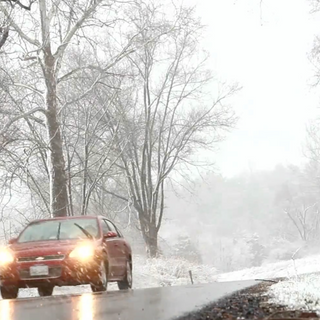How to Prepare for Extreme Cold Weather: Snow Storms, Blizzards, and Essential Go-Bags
As winter approaches, the risk of extreme cold weather events like major snowstorms and blizzards increases. These severe weather conditions can leave communities without power, food, or water for days. Whether you live in an area prone to blizzards or are simply looking to prepare for unpredictable winter weather, knowing how to prepare for extreme cold is crucial. This blog will guide you through key steps to stay safe during snowstorms and power outages, emphasizing the importance of go-bags and how to hunker down when the snow piles up.
1. Understand the Threat of Snowstorms and Blizzards
Snowstorms and blizzards are not just an inconvenience—they can be life-threatening if you're unprepared. Blizzards, in particular, bring heavy snowfall, powerful winds, and frigid temperatures, reducing visibility to near zero and making it difficult to travel. Preparing for these conditions goes beyond the basics of shoveling the driveway. When the weather turns dangerous, it's essential to have a well-thought-out plan for survival and comfort.
2. Why Go-Bags Are Essential for Winter Weather Preparedness
A go-bag is a portable emergency kit that includes everything you need to survive for at least 72 hours if you're cut off from essential services like electricity, water, and food. When a blizzard hits and you’re forced to stay indoors or even evacuate, a go-bag ensures that you have vital supplies on hand.
Key Items to Include in Your Go-Bag for Snowstorms:
-
Warm Clothing: Include thermal socks, insulated gloves, hats, scarves, and extra layers to stay warm.
-
Food & Water: Pack non-perishable food items such as granola bars, canned soups, freeze-dried meals, and plenty of water. If you're in a situation where melting snow is your only water source, ensure you have a portable stove or way to boil water.
-
Flashlight & Batteries: In case of power outages, a reliable flashlight or headlamp with extra batteries will be invaluable.
-
First Aid Kit: Prepare for minor injuries and include any prescription medications you need.
-
Portable Power Bank: Keep your phone charged, especially if you're relying on it for emergency alerts or communication.
-
Blankets & Sleeping Bags: Insulated, space-saving blankets or sleeping bags will keep you warm during cold nights without power.
-
Multi-tool or Swiss Army Knife: This compact tool can assist with various needs, from opening cans to cutting rope.
Having a go-bag packed and ready ensures you’re not scrambling when a blizzard arrives. If your area is prone to frequent snowstorms, keep these bags near the door, in your car, or stored in easily accessible spots.
3. How to Prepare Your Home for a Snowstorm or Blizzard
When a major snowstorm is forecasted, it's important to take steps to fortify your home and ensure it's ready to weather the storm. Here are some proactive tips for staying safe indoors:
a. Insulate and Seal Gaps
Cold drafts can quickly make your home feel like a freezer during a blizzard. Seal up windows and doors with weatherproofing materials or use heavy blankets to cover drafty spots. Insulating your home not only keeps it warmer but also reduces heating costs.
b. Maintain Your Heating System
Ensure your heating system is working efficiently. Have a professional inspect it ahead of the season. If you use space heaters, ensure they are in safe working condition and follow safety protocols. Consider investing in a battery-operated space heater that doesn't rely on electricity.
c. Stock Up on Essentials
It’s critical to have at least three days' worth of food, water, and medications stored up. When you're snowed in, getting to a grocery store might not be an option, so stock up on items like:
-
Canned goods (soup, beans, tuna)
-
Bottled water and electrolyte drinks
-
Instant oatmeal and energy bars
-
Pet food (if applicable)
d. Have Backup Power Solutions
In case of power outages, a generator can be a lifesaver, especially for maintaining heat, lighting, or keeping the fridge running. However, if you don't have a generator, battery-powered lights, lanterns, and extra batteries will be crucial.
e. Keep a Shovel and Ice Melt Handy
For those that need to go outside, even briefly, having a snow shovel and ice melt on hand is a must. These tools will allow you to clear walkways, driveways, or around your vehicle in case of a quick retreat to the car or an emergency.
4. How to Hunker Down Without Power, Food, or Water
If a snowstorm forces you to hunker down without power, it's crucial to maintain warmth, conserve energy, and keep spirits up.
a. Stay Warm
Without heat, staying warm becomes a priority. Wear layers of clothing, including hats, gloves, and thermal socks. If possible, move to the smallest room in the house and close off unused areas to conserve heat. If you have a fireplace or wood stove, use it, but ensure proper ventilation.
b. Conserve Energy
To make your food and water last longer, conserve energy by limiting the number of times you open your refrigerator or freezer. If you have frozen water bottles, use them to help keep the space cold for longer periods.
c. Water from Snow
If you find yourself without drinking water and have access to snow, you can melt it for water. To avoid hypothermia, do not eat snow directly—always melt it first. A camping stove or even a portable burner can be handy here. Just be sure to filter or boil the water before drinking.
d. Stay Informed
Even if the power goes out, keep a battery-powered radio or your smartphone with a backup power source on hand for weather updates and emergency alerts. Knowledge is power, especially in the middle of a snowstorm.
5. Additional Tips for Snowstorm Survival
-
Don't Travel During a Storm: If a snowstorm is predicted, stay home. Driving in blizzards can be deadly due to whiteout conditions and slick roads.
-
Prepare for Cabin Fever: Being stuck indoors for long periods can lead to boredom and stress. Have activities like books, puzzles, or board games on hand to keep your family entertained.
Conclusion
Preparing for extreme cold weather and snowstorms is essential to your safety and well-being. From packing a well-stocked go-bag to ensuring your home is winter-ready, taking these steps will give you peace of mind during the harshest winter conditions. With snowstorms and blizzards becoming more unpredictable, the importance of being ready for the worst cannot be overstated. Stay warm, stay safe, and stay prepared!
For more winter weather preparedness tips, follow our blog at Echo-Sigma.com.

